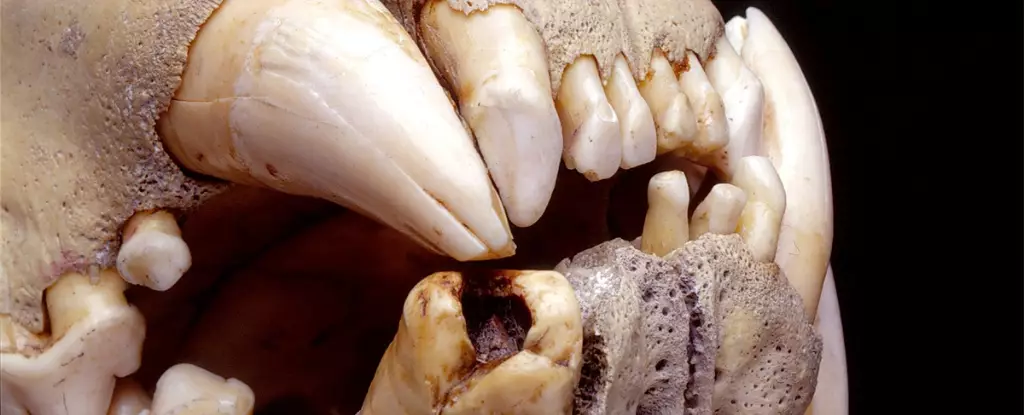For over a century, the tale of the Tsavo lions, who famously terrorized the construction crews of a railway bridge in Kenya, has captured the imagination of writers, historians, and biologists alike. The narrative paints a dark portrait of these felines as ruthless predators who deliberately hunted humans. However, recent scientific investigations have sought to peel back the layers of myth surrounding their infamous behavior. By analyzing ancient DNA and deploying modern techniques, researchers have begun to reveal the unique circumstances that may have led these lions to prey on humans.
The infamous events of 1898 began with the arrival of Lieutenant Colonel John Henry Patterson, sent to oversee the construction of a railway connecting Kenya and Uganda. He brought with him thousands of workers, primarily from India, who were housed in camps along the expansive construction site. Initially dismissive of the tales of lions attacking workers, Patterson’s skepticism quickly turned into a nightmare after witnessing an attack firsthand. The frequency and ferocity of the lion encounters were alarming and forced Patterson to take drastic action, leading to a prolonged and desperate effort to eliminate the two maneless lions responsible for the chaos.
What makes the Tsavo case particularly compelling is how the lions adapted their behavior in response to the vulnerable human population around them. The attacks reportedly paused before returning with newfound boldness, indicating a strategic shift in hunting methods. This behavior not only underscores the adaptability of lions but also their capacity for learning and changing tactics when presented with unique circumstances.
Decades after these harrowing events, the lions’ remains found their way to the Field Museum of Natural History in Chicago. It wasn’t until ecologist Thomas Gnoske stumbled upon their preserved skulls that an investigation into their infamous diet began. What began as a routine cataloging effort transformed into a pioneering study of ancient DNA analysis, aiming to unearth dietary habits that had remained hidden for decades.
Using advanced sequencing techniques, Gnoske and his team meticulously examined hair fragments lodged in the lions’ teeth. With confirmation of the hairs’ age, they focused on mitochondrial DNA (mtDNA), which is more abundant and better preserved in ancient samples. The results were enlightening, revealing not only the presence of various ungulates in the lions’ diet but also the startling discovery of human hair.
The analysis further detailed the variety of prey consumed by these lions, listing species such as giraffe, waterbuck, wildebeest, and even the historical presence of buffalo. However, the revelation that human hair was found among the remains compels us to reconsider the context of these predatory actions. While the hair strongly suggests a predatory event, it also aligns with a shifting ecosystem. Factors such as rinderpest—a viral disease decimating local ungulate populations—may have forced the lions to adapt their diet in drastic ways, thereby explaining their shift toward human-targeted attacks.
Interestingly enough, the research also highlighted the absence of buffalo in the dine list, a species which is typically preferred by modern lions in Tsavo. This absence raises questions about whether the lions’ human predation was a consequence of ecological pressures rather than a predilection for hunting humans. Patterson’s records support this theory, as there were no sightings of buffalo or livestock during the work’s duration, indicating a stark change in the available prey.
While the recent study delves into the stark realities of lion hunting behavior, it also raises ethical considerations regarding the use of human DNA in these analyses. Researchers consciously opted not to pursue more extensive testing of the human hairs, emphasizing the need to respect potential descendants of the victims and the sensitive nature of the findings. This decision marks a crucial step in scientific responsibility, urging broader discussions about the relationship between communities and wildlife.
As the mystery of the Tsavo lions unfolds, it becomes increasingly clear that the tale is more complex than simple man-eating instincts. The interplay of ecological dynamics and human encroachment on wildlife territory reveals a nuanced narrative that invites further exploration. Rather than merely portraying the lions as fearsome hunters of men, we are urged to consider a broader context where desperation, disease, and habitat disruption played significant roles in shaping these infamous behaviors. Ultimately, the Tsavo mystery serves as a reminder of the delicate balance between man and nature, one that continues to evolve in today’s changing world.


Leave a Reply